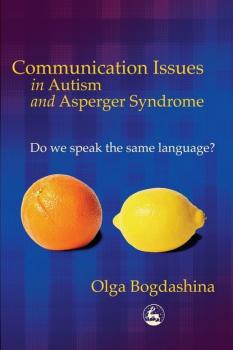ТОП просматриваемых книг сайта:
Olga Bogdashina
Список книг автора Olga BogdashinaАннотация
Olga Bogdashina argues persuasively that, contrary to popular belief, spirituality plays a vital role in the lives of many people with autism spectrum disorders (ASD). Drawing on interdisciplinary research from fields as diverse as psychology, philosophy, anthropology, linguistics, neuroscience and religion, as well as first-hand experiences of people on the spectrum, she shows how people with ASD experience their inner worlds and sense of self, and how this shapes the spiritual dimension of their lives and vice versa. She presents a coherent framework for understanding the routes of spiritual development and 'spiritual giftedness' within this group, offering insights that will inform understanding of how to support and nurture spiritual wellbeing in people with ASDs. This book gives a voice to both verbal and non-verbal individuals on the autism spectrum whose spiritual experiences, though often unconventional, are meaningful and profound. It is essential reading for all those interested in the spiritual wellbeing of this group, including pastoral carers and counsellors, ministers of religion, spiritual leaders, parents and carers and individuals on the autism spectrum.
Аннотация
In this intelligent and incisive book, Olga Bogdashina explores old and new theories of sensory perception and communication in autism. Drawing on linguistics, philosophy, neuroscience, psychology, anthropology and quantum mechanics, she looks at how the nature of the senses inform an individual's view of the world, and how language both reflects and constructs that view. Examining the 'whys' and 'hows' of the senses, and the role of language, Olga Bogdashina challenges common perceptions of what it means to be 'normal' and 'abnormal'. In doing so she shows that autism can help to illuminate our understanding of what it means to be human, and of how we develop faculties that shape our cognition, language, and behaviour. In the final chapter, she explores phenomena often associated with the paranormal – including premonitions, telepathy and déjà vu – and shows that these can largely be explained in natural terms. This book will appeal to anyone with a personal or professional interest in autism, including students and researchers, clinical practitioners, individuals on the autism spectrum and their families, teachers, speech and occupational therapists, and other professionals.
Аннотация
Inspired by the often uncomfortable interplay between autistic individuals, parents and professionals in understanding autistic spectrum conditions, Olga Bogdashina uses the concept of Theory of Mind (ToM) to consider these groups' different (and often conflicting) perspectives. ToM is the ability to imagine and make judgements about what others feel and think; its absence in autistic individuals is called 'mindblindness'. This book addresses the 'mindblindness' of people united in their interest in autism but divided by their different angles and perspectives. Divided into four parts, the book first defines autism, then the views of the three main groups working with it – autistic individuals, parents and professionals – under the headings of classifications, diagnosis, causes, development, theories and treatment. By comparing and reconciling the different perspectives in this way, the book helps each group to understand and predict each other's responses and behaviours. This enlightening and innovative book offers a unique way of 'stepping in each other's shoes' and is a valuable resource for all people living or working with autism.
Аннотация
Providing a theoretical foundation for understanding communication and language impairments specific to autism, Olga Bogdashina explores the effects of different perceptual and cognitive styles on the communication and language development of autistic children. She stresses the importance of identifying each autistic individual's nonverbal language – which can be visual, tactile, kinaesthetic, auditory, olfactory or gustatory – with a view to establish a shared means of verbal communication. She offers an explanation of why certain approaches, for example PECS, might work with some autistic children but not others. Offering real insights, the `What They Say' sections enable the reader to see through the eyes of autistic individuals and to understand their language differences first hand. `What We Can Do to Help' sections throughout the book give practical recommendations on what to do in order to help autistic individuals use their natural mechanisms to learn and develop social and communicative skills. The final chapters are devoted to assessment and intervention issues with practical recommendations for selecting appropriate methods and techniques to enhance communication, based on the specific mode of communication a person uses.




